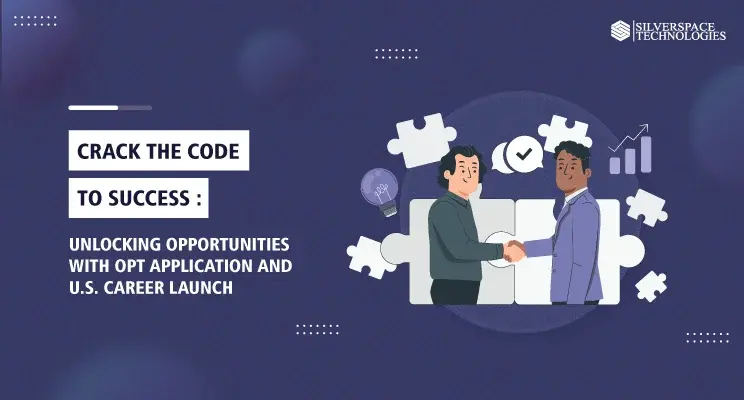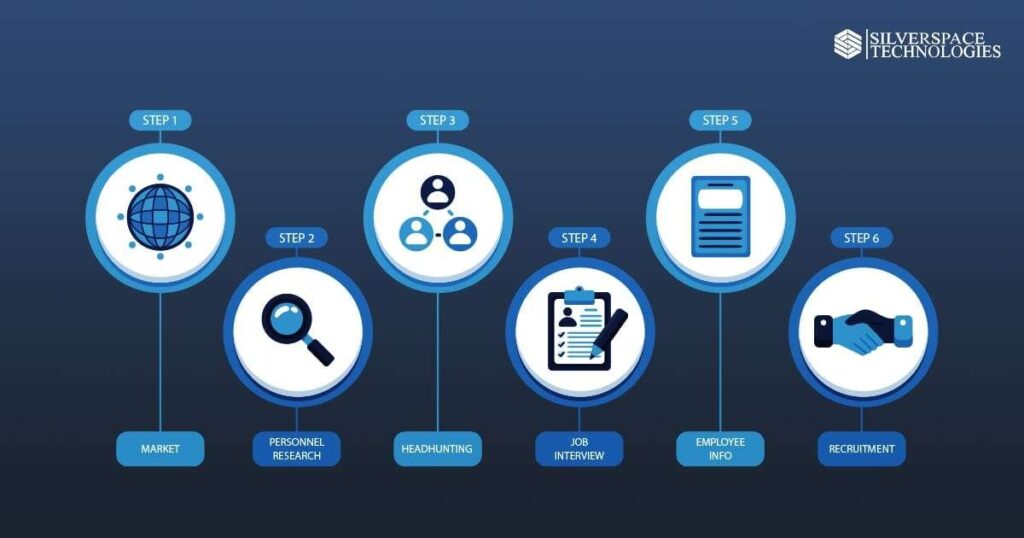
Are you aspiring to kick-start your career in the United States? Silverspace Technologies is here to guide you through the process. Our consultancy services are designed to help you crack the code to success by leveraging the Optional Practical Training (OPT) program and launching your career in the U.S. Let’s delve into the world of OPT and explore how it can unlock countless opportunities for you.
What is OPT?
OPT stands for “Optional Practical Training.” It is a program in the United States that allows international students with F-1 visas to gain practical work experience related to their field of study. OPT is significant because it provides students the opportunity to apply their academic knowledge in real-world settings, enhance their skills, and improve their employability. It can also serve as a pathway for international students to transition into careers in the United States after completing their studies.
Types of OPT
Optional Practical Training (OPT) in the United States comes in different forms to cater to the needs of international students pursuing their education there. Here are the main types of OPT:
- Pre-Completion OPT: This type of OPT allows eligible F-1 students to engage in practical training related to their field of study before completing their academic program. It provides an opportunity to gain work experience while still studying.
- Post-Completion OPT: Post-completion OPT, as the name suggests, occurs after the student has completed their degree program. Eligible students can apply for post-completion OPT, allowing them to work in their field of study to gain practical experience.
- STEM OPT Extension: STEM (Science, Technology, Engineering, and Mathematics) OPT is an extension available to students who have completed a degree in a STEM field. It provides an additional 24 months of OPT work authorization on top of the standard 12-month OPT period, for a total of 36 months. STEM OPT is designed to encourage international students in STEM fields to contribute their expertise to the U.S. workforce.
Each type of OPT has its own eligibility criteria and regulations, and international students need to understand the specific requirements and application procedures associated with the type of OPT they intend to pursue. OPT is a valuable opportunity for students to gain practical work experience in the U.S. and enhance their career prospects.
OPT Application Process
(A Step-by-step guide)
The Optional Practical Training (OPT) application process for F-1 students in the United States involves several steps. Step-by-step instructions are provided below to help you through the process:
1. Attend OPT workshops:
Many universities and institutions require students to attend OPT workshops to understand the application process thoroughly. Check with your designated school official (DSO) or international student office for workshop schedules.
2. Determine Eligibility:
Ensure you meet the eligibility criteria for OPT, including maintaining F-1 status, being enrolled for at least one full academic year, and choosing between pre-completion and post-completion OPT based on your academic progress.
3. Prepare the required documents:
- Passport copy
- Visa copy
- I-94 record
- I-20 copies (previous and current)
- Passport-sized photos
- Form I-765 (Application for Employment Authorization)
- Optional: STEM OPT-related documents (if applicable)
- Complete Form I-765. Fill out Form I-765 online or on paper, following the provided instructions. Please provide all required information accurately and thoroughly.
4. Check Processing Times:
Check the current USCIS processing times for OPT applications to estimate how long it may take to receive your Employment Authorization Document (EAD).
5. Submit OPT Application:
Submit your completed Form I-765 along with the required documents to USCIS. Ensure you have the correct filing fee or request a fee waiver if eligible.
6. Receive Receipt Notice:
USCIS will send you a receipt notice to confirm they have received your application. You can trace your case using the receipt number on this notice, which is included.
7. Biometrics Appointment:
Attend a biometrics appointment if required. USCIS will send you an appointment notice if biometrics are necessary.
8. Wait for EAD Card:
USCIS will process your application, and once approved, they will send you an Employment Authorization Document (EAD) card. This card will indicate your OPT start and end dates.
9. Begin OPT Employment:
You can only start working on OPT once you receive the EAD card and it reaches the start date mentioned on it.
10. Maintain Reporting Requirements:
During your OPT period, you must report any changes in your employment status or address to your DSO to ensure compliance with OPT regulations.
11. Consider STEM OPT Extension:
If eligible and interested, you can apply for a STEM OPT extension before your initial OPT period expires to extend your work authorization.
OPT Application Timeline
The OPT application timeline is crucial to ensure your application is processed smoothly and that you can begin your OPT employment on time. Here’s a general timeline:
- 90 Days Before: You can start applying for OPT 90 days before your proposed employment start date for pre-completion OPT or 90 days before your program end date for post-completion OPT.
- Before Your Program Ends: USCIS must receive your OPT application within 30 days of your OPT I-20 issuance date and before your program end date. Ensure you meet this deadline.
- Receipt Notice: After submitting your application, you will receive a receipt notice from USCIS. This notice will contain a receipt number that allows you to track your application’s status.
- Biometrics Appointment: If required, attend a biometrics appointment at the designated Application Support Center (ASC).
- Processing Time: USCIS often takes over 90 days to process OPT applications. Plan accordingly and keep monitoring your case status online.
- Employment Start: You can only start working on OPT once you receive the Employment Authorization Document (EAD) and it reaches the start date mentioned on it.
- Reporting: During your OPT period, report any changes in your employment status or address to your DSO to maintain compliance with OPT regulations.
Employment during OPT
When you’re on Optional Practical Training (OPT) in the U.S., it’s essential to ensure that your employer meets certain requirements. Here’s what your employer needs to know:
Work Authorization:
- Employers should be aware that you have valid work authorization under OPT, and they should verify the start and end dates of your employment eligibility.
Directly Related Work:
- Your major subject of study must be closely relevant to OPT work. Your employer should offer a role that aligns with your academic program.
Full-Time Employment:
- During Post-Completion OPT, you must work full-time (at least 20 hours per week). For STEM OPT, full-time employment is also required.
STEM OPT Extension (if applicable):
- If you’re on STEM OPT, your employer should be aware of the additional requirements and responsibilities associated with STEM OPT.
Employment Reporting:
- Employers must report your employment information to the Designated School Official (DSO) at your educational institution. They should be willing to cooperate with this reporting.
Prevailing Wage:
- The salary offered to you must meet or exceed the prevailing wage for the specific job and location, as defined by the Department of Labor.
Compliance with OPT Regulations:
- Employers should adhere to U.S. immigration regulations concerning OPT employment.
The Key to Unlocking Your Future in the U.S.
Silverspace Inc., an IT staffing consultancy, helps international students transition from OPT to a U.S. career launch. To successfully transition, you must meet employer requirements, develop your skills, and network strategically. By understanding your employer’s needs, enhancing your skills, and making the most of your OPT period, you can unlock a promising future in the United States.

